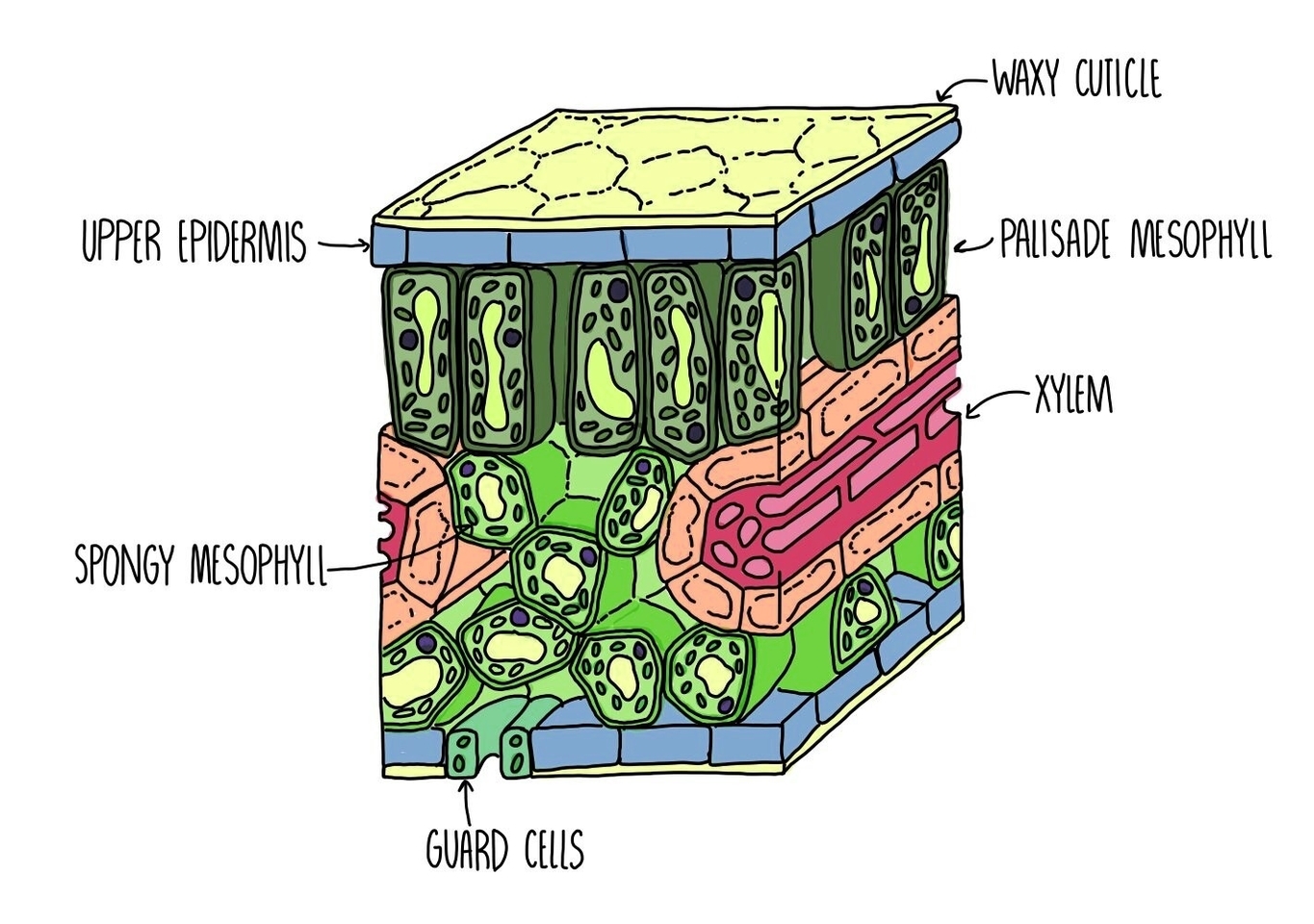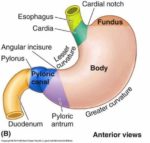Leaf Tissues and Cells
Leaves, the primary photosynthetic organs of plants, are composed of three main types of tissues: the epidermis, mesophyll, and vascular tissues.
1. Epidermis: The outermost layer of the leaf, present on both sides, is the epidermis. It forms a protective layer over the leaf and often produces waxy substances to prevent the leaf from drying out or being attacked by insects. The upper epidermis, often exposed to direct sunlight, is a thin layer of translucent cells, while the lower epidermis has specialized cells for allowing air exchange.
2. Mesophyll: This tissue fills the leaf and is sandwiched between the two epidermal layers. It consists of two types of cells:
– Palisade Mesophyll: These are long columnar cells located near the surface, loaded with chloroplasts, and are primarily responsible for photosynthesis.
– Spongy Mesophyll: These cells form a loose matrix and are not as neatly packed as the palisade cells. They form networks around bundles of vascular cells and transport materials to and from these bundles.
3. Vascular Tissues: These form the leaf veins and are located within the mesophyll layer. They include:
– Xylem: These cells form a rigid tube for carrying water.
– Phloem: These cells form a specialized tube for transporting sugars to the rest of the plant.
In addition to these, there are specialized cells called guard cells that flank small holes in the lower epidermis known as stomata. These stomata can open and close, allowing the plant to exchange carbon dioxide for the oxygen it produces. They also play a crucial role in transpiration, a process where water is passed out of the stomata and sucked up through the roots, bringing vital nutrients to the plant.
The structure of leaf tissues and cells plays a critical role in the overall function of the leaf and the plant itself. Each cell type is designed to perform specific functions, contributing to the plant’s ability to photosynthesize, transport nutrients, and interact with its environment..


